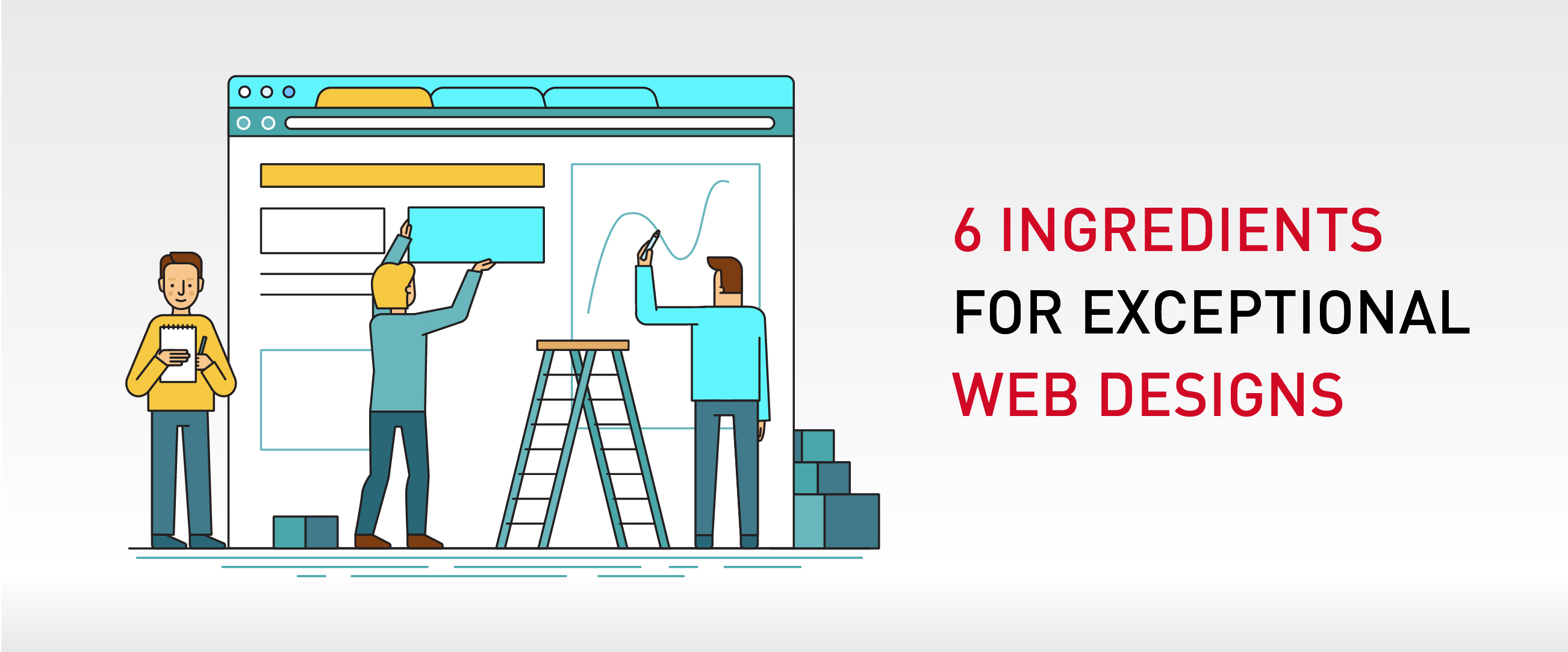Ask 20 people to explain web design and you’re likely to get 20 different answers. A computer programmer and graphic designer look at website design from a different perspective but there’re common features as well.
You can easily find a pool of intriguing websites where each is unique and dazzling to a viewer. So, how do we classify a good design from the bad? Even two distinct sites have some overarching themes that designers focus on regardless of destination. Here’s the recipe for exemplary web designs.

1. The Right Content
Beginning and ending of a good website design depend on content placement that has to be equally outstanding and exceptional. If a website doesn’t have engaging, precise, and compelling content, visitors will usually look for finer alternatives. To achieve uniqueness, think out-of-the-box but whatever you post, keep it simple and grammatically correct.
2. Multimedia Files
Another factor of a good web design is multimedia content except for a block of written content. Users are more enthralled with high-definition images, interactive audio-visual, and animation so keep it balanced with text.
Don’t make a site excessively heavy or it’ll be difficult to browse and avoid deploying unethical or discriminating images. Your page must be a unique experience for all visitors and not something purely artistic that shouldn’t give viewers a headache. Colors should blend well with the entire page for aesthetic appeal.
3. Easy to Navigate
Remember, not every internet user is computer savvy and thus, is likely to lose track of a site if it’s poorly designed or confusing. If you wish people to return after a single visit, make sure everything is easy to find. Meanwhile, even if you manage to accumulate computer-savvy users, keep the site simple and navigational.
4. A Consistent Website Design
Colour scheme or website theme matters little; however, ensure to keep everything consistent and balanced across all web pages. The approach of web design for all pages must be identical as discreteness would only confuse visitors. Include features such as directional links, contact information, and inquiry forms.
5. Make a Visitor Feel Comfortable
User experience is at the core of every successful website. Unless you’re developing a site or blog page for your eyes only or simply to use as a journal, make sure images, links, texts, and everything should be 100 percent as per your audience. Keep text fonts simple and identical all over.
User and site admin interaction are very important for long-term success, so you should always make visitors feel welcome. Colour scheme is another important factor that can either make or break the resonance of your site, so whatever you do, keep it balanced.
6. Whitespace
Crammed content over web pages or lackluster design indicates unprofessionalism. No doubt website deliver content, but you don’t need to break things up or overwhelm your audience. Headers, footers, margins, and other technical aspects should be in harmony to make a website user-friendly.
Whatever images you’ve uploaded, they should be relevant to products and services you’re offering, and the same goes for promotional content. Even if you’re providing cheap design, it doesn’t have to be overly extravagant. In fact, keep it clean, simple, spacious, and easy to browse.
Conclusion
These are a few secrets to excellent web designs. Carefully understand all aspects before leaping blindly!






